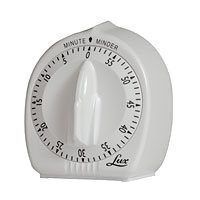Start Your Story (or Get It Rolling)
A Tutorial with Novelist Meredith Sue Willis
Fall 2015Session One
Monday, October 19, 2015
Welcome to Start Your Story!
Sessions will be posted on five Mondays between Columbus Day and Thanksgiving:
Session One
Session Two
Session Three
Session Four
Session FiveEach week there will be between 5 and 10 writing assignments for you to try or ignore as you please. The assignments are exercises aimed at getting your narrative imagination in gear--and rolling forward. You don't have to write all the exercises, although if you did, you would amass quite a bit of work by the end of the tutorial.
Write as much as you can, but send me an average around 1400 words a week, with a limit of 7000 words for the entire five weeks.
As you know, the course is completely online and consists of the weekly assignments plus the personal weekly feedback from the teacher. With hard work and a little luck, a tutorial like this will give you several good starts on prose narratives-- stories, novels, memoir, etc. or, if you work on one project, up to 30 new or revised pages of a draft.
For those of you already engaged in a project, the assignments can enrich and add material. Also, if you prefer, you may substitute sections of the ongoing work for the assignments. You may send more or less each week, but keep in mind the total limit for the five weeks.
Send the homework to me at MeredithSueWillis@gmail.com by midnight of the due date— Session One homework is due by Sunday night, October 25, 2015. Send the homework attached to an e-mail as a Word or Rich Text file. If this is a problem for you, e-mail me, and we'll work something out.
What is the Difference Between a Tutorial and a Class?
My online classes have longer, lecture-style essays and more readings, and they cost more. These tutorial "lessons" are stripped down, primarily lists of starters and exercises. The focus is, as always, on your writing and my responses to your submissions.
Some basic warm-up and all-purpose exercises
Try as many of these as you can, but if one pulls you in or catches you up, go with it! The objective is to make this tutorial work for you, and working for you means getting you writing!
Exercise 1: If you've never done it before, and maybe even if you have, set a kitchen timer or your smart phone alarm for five minutes. Write slowly but steadily whatever is running through your mind. If you are stuck, repeat a word. This is called a free writing.
Exercise 2: Underline a word or phrase of what you wrote in the free writing. Choose something that catches your attention. Copy that phrase over, set the timer again, and write again, using the same steady-not-stopping technique to write whatever the phrase suggests to you. This is called a directed free writing.
Exercise 3: You can also do a directed free writing with a character or plot point that is giving you trouble in your novel or story. Write the name or the situation and then set the timer. Write steadily about the person or situation for the full period of time and see what you come up with.
Hint: If this works for you, set the timer for ten minutes or more, not five.
The next exercises are particularly good if you have trouble finding a plot. You begin by thinking about great short shorts of the past: fables and parables etc.
Exercise 4: Make a list of 5 famous fables or parables or folk tales or fairy tales. Red Riding Hood is illustrated above, the parable of the Prodigal Son to the right. You might use Aesop's fables or parables told by world religions like like the Zen parables here.
Exercise 5: Write a one or two paragraph story that teaches a lesson the way these old stories did.
Exercise 6: Write a modern version of one of these stories. (As an example, see the Raymond Carver short-short online called "Little Things" or "Popular Mechanics" which is a version of the story of Solomon and the two harlots in the Bible.
Exercise 7: Try this simple exercise: Write something that has an apple in it.
If you are engaged in a longer project, put an apple in the long project. The apple can be central or peripheral. It might be merely referred to or described in great detail. It might be a crystal apple or a rotten one or apples cooked into sauce. Describe it, remember it, have two characters discuss it.
If you're engaged in a project already, try to use the apple in your project: I did the apple exercise with a class a couple of years ago when I was drafting my novel Love Palace. I had one character give another a crystal apple as a gift, and it added a new layer to my understanding of their relationship.
Exercise 8: Here's another object exercise:
Describe as fully as possible an old toy (or other beloved object from your childhood) using as many of your senses as possible. Can you remember the smell of the old blanket you used to fall asleep with? What about the sound of that fascinating old fashioned clock on your grandmother's dresser shelf that you were not allowed to touch? Try to include more senses than sight, and feel free to add details that weren't really a part of it.
After you've done several exercises, pick one of the writings you've done, and spend a little time revising it. Send that to me attached to an e-mail. I will go over it and get back to you with responses and suggestions a few days after the deadline. E-mail anytime with questions or ideas.
Just for fun, here's some advice the poet John Berryman gave to the poet W.S. Merwin. Merwin passes it along at the end of a poem he called "Berryman."
I asked how can you ever be sure
that what you write is really
any good at all and he said you can't
you can't you can never be sure
you die without knowing
whether anything you wrote was any good
if you have to be sure don't writeI really like that: "If you have to be sure, don't write."
Subscribe to Meredith Sue Willis's Free Newsletter for Readers and Writers:
Images and photos found on the various pages of this web site
may be used by anyone, but please attribute
the source when it is specified.
This work is licensed under a Creative Commons Attribution-NonCommercial-ShareAlike 3.0 Unported License.





